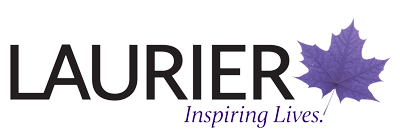Step 3: Create an Outline and Design a Research Strategy
Creating an outline and having a research strategy can save you time and make you more efficient. This research strategy will guide you in collecting and evaluating relevant evidence to answer your question and substantiate your thesis.
An outline will:
- Help you shape the broad trajectory of your argument.
- Organize and order the information to answer your research question.
- Foresee how evidential details will support the larger argumentative structure of the assignment.
Create an Outline
Start with Your Research Question
Write your research question at the top of your page so it is clear and visible. Outlines enable you to see the logical relationships between your ideas and information from sources to shape the trajectory of your argument.
Use an outline to:
- Find parallels between and across ideas and concepts (what is similar).
- Draw together relevant information and divide dissonant information (what information logically goes together and what does not).
- Subordinate minor points to major points, and major points to broad ideas (refer to the outline example below).
Outline Example
In the following outline example, the paper discusses the Industrial Revolution (broad idea). A description of the rise of Manchester’s cotton industry during the 1840s (minor point) is but one aspect in the broader history of Britain’s industrialization (major point).
I. Industrial Revolution
- Britain
- Manchester's cotton industry, 1840s
- Germany
For more tips, consult the Laurier Writing Centre handout on “How to Write an Outline” and “Writing a Research Paper.”
Be Concise
To organize and prioritize your information, use bullets, arrows, roman numerals, letters, boxes, and short forms and abbreviations. Your outline should be a visible map that allows you to see instantly how your paper is organized.
Return to the Outline to Check Your Progress
As you work, return to the outline and use it as a road map during the research and writing process. If you find your research indicates that different points need to be included, then you need to reconsider and revise your plan accordingly. Avoid making multiple changes as you go and keep your research question in mind to avoid unnecessary changes.
Craft a Research Strategy
Your research strategy can now take shape from the outline. Return to the notes you have compiled in your outline and ask the question, “What information must I now gather to make these points?”
Considerations
- Do you need to conduct original research yourself to answer your question? Do you need to conduct an experiment? Take a survey? Record your observations? Describe an event or artifact? Is this an expectation for your assignment and course? If you are unsure, ask your instructor to clarify.
- Should your information come from a primary source (an original record, such as a novel, a map, an experiment, a study report or statistics)?
- Is a secondary source available and acceptable (a later account of an original record, such as a monograph, a book, a critical review or an editorial)?
- Avoid using tertiary sources (summaries or compilations of primary and secondary sources, such as textbooks, encyclopedias, Wikipedia or other third-hand accounts).
- Use Google and other web sites with caution – they can be helpful for leading you to information when you are just starting out, but they are not academic sources that you can cite along with your recognized sources. See Step 4 for more information on evaluating source material.
- Decide whether you need to access resources (books, articles, online sources) from the university library, the public library, government records, historical agencies, business or corporations, etc. Make sure you allocate sufficient time to find and request the sources you will need.
- Look at key words and phrases in your outline to identify the topic(s) requiring the most extensive research; focus your efforts on finding sources to address these elements.
- Consult the librarians, especially the subject librarians in the Laurier library, for help in determining what sources are appropriate to your topic and readily available.
Make a List
Make a list or notes about the types of information and sources you will need based on the points above and use it to gather your materials. The number of resources you gather and the amount of material you study will depend upon the complexity of the research question and the assignment itself.
For more information on how to create a research strategy, consult the resource, “Writing a Research Paper.” Once you have an outline and research strategy in place, carry on to Step 4 of the Assignment Planner.

